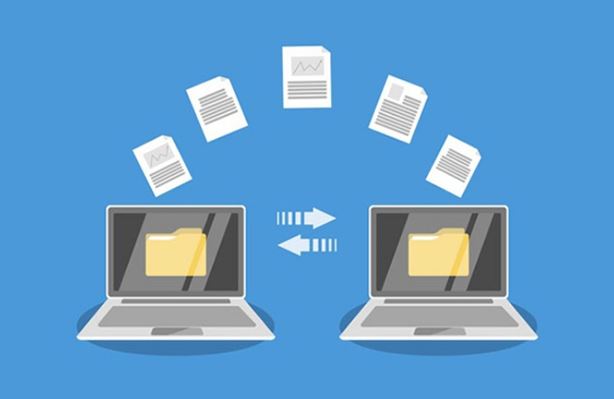Transferring data over a network.
The OSI model (Open Systems Interconnection model) is a theoretical framework that standardizes the functions of a telecommunication or computing system, without regard to its underlying internal structure and technology. While an actual OSI protocol was developed, it never gained widespread adoption, and you are unlikely to encounter a network running solely on OSI protocols today.

The core idea behind the OSI model is that during transmission, data passes through multiple layers. As data moves from the top layer to the bottom, each layer appends its own header (and possibly a trailer) to the data. This process continues until it reaches the physical layer, which sends the data out over the network.
On the receiving end, the process happens in reverse:
-
The physical layer receives the signal
-
Each subsequent layer removes its respective header/trailer and passes the remaining data to the next higher layer
-
This continues until the top-most layer receives the complete and usable data
📚 The Seven OSI Layers (Top to Bottom)
1️⃣ Application Layer
-
Provides network services to end-users
-
Includes file sharing, email, and print services
-
Interface between the user application and the network
2️⃣ Presentation Layer
-
Handles data formatting, encryption, compression, and translation
-
Defines character encoding (e.g., ASCII, EBCDIC)
-
Ensures the data is in a readable format for the receiving system
3️⃣ Session Layer
-
Establishes, maintains, and terminates sessions between applications on different devices
-
A session includes all activities related to a single file transfer or interaction
-
Manages logins, user authentication, and network monitoring tasks
4️⃣ Transport Layer
-
Ensures reliable, end-to-end communication
-
Performs error checking, flow control, and packet segmentation
-
In TCP/IP networks, this is where TCP or UDP operates
-
Reassembles small packets into large messages and vice versa
5️⃣ Network Layer
-
Responsible for logical addressing (e.g., IP addresses) and routing
-
Breaks data into packets
-
Determines the best path for data using routing protocols
-
Handles packet switching, traffic control, and congestion management
6️⃣ Data Link Layer
-
Organizes data into frames
-
Adds control information (start/end of the frame)
-
Manages MAC addressing (unique identifiers for each NIC)
-
Divided into two sublayers:
-
Media Access Control (MAC): Controls how devices gain access to the medium
-
Logical Link Control (LLC): Handles error detection and frame synchronization
-
7️⃣ Physical Layer
-
Translates frames into electrical, optical, or radio signals
-
Defines hardware connections, signal timing, voltage levels, and physical media
-
Determines whether communication is unidirectional or bidirectional
-
Concerned with cables, connectors, switches, and signal modulation
💡 Mnemonic to Remember OSI Layers:
All People Seem To Need Data Processing
(Application, Presentation, Session, Transport, Network, Data Link, Physical)
⚙️ IEEE 802 Standards
The Institute of Electrical and Electronics Engineers (IEEE) created the 802 committee to define standards for various network technologies. While the IEEE 802 family doesn’t cover every protocol, it defines many of the most widely used network standards today, including:
-
802.3 – Ethernet
-
802.11 – Wireless LAN (Wi-Fi)
-
802.1X – Network access control
-
802.5 – Token Ring (now largely obsolete)
These standards ensure interoperability and consistency across networking hardware and software worldwide.
🧠 Summary
The OSI model may be theoretical, but it provides a valuable framework for understanding how data moves across a network. It helps network engineers, developers, and IT professionals diagnose issues, design systems, and understand where specific functions and protocols operate in the communication process.
While protocols like TCP/IP dominate real-world networks today, the OSI model remains a fundamental educational tool for networking concepts.
